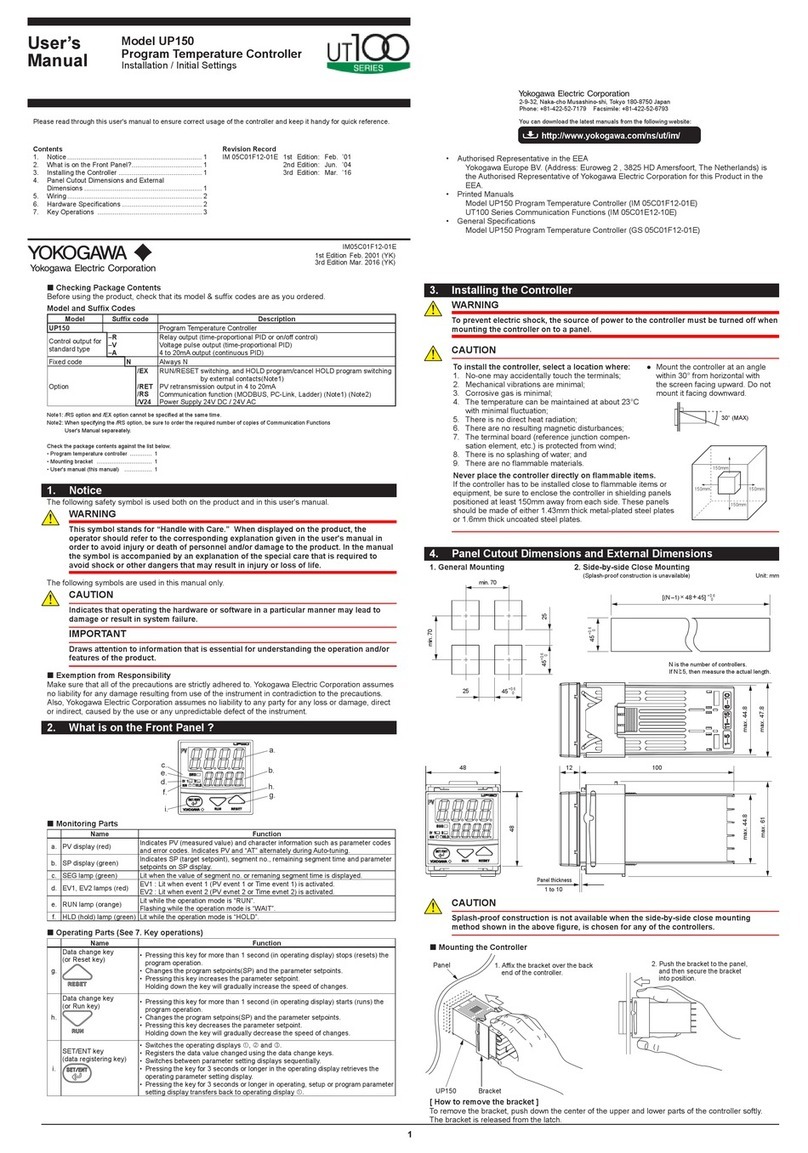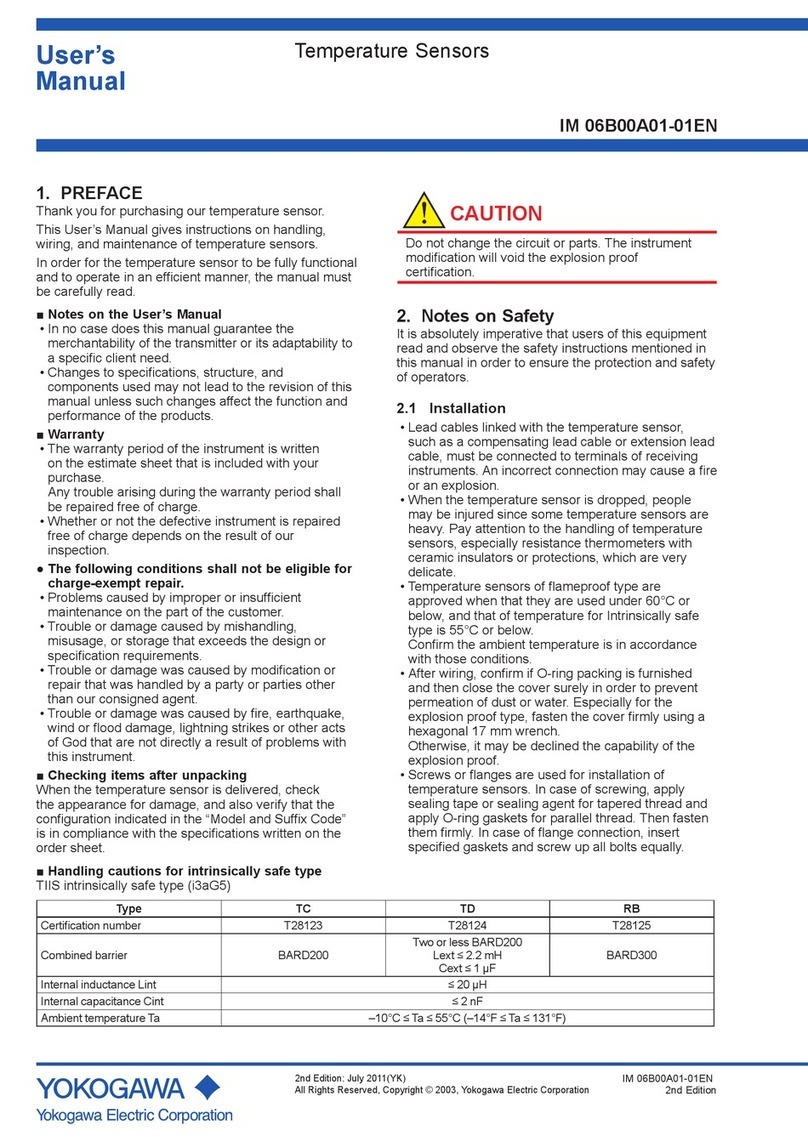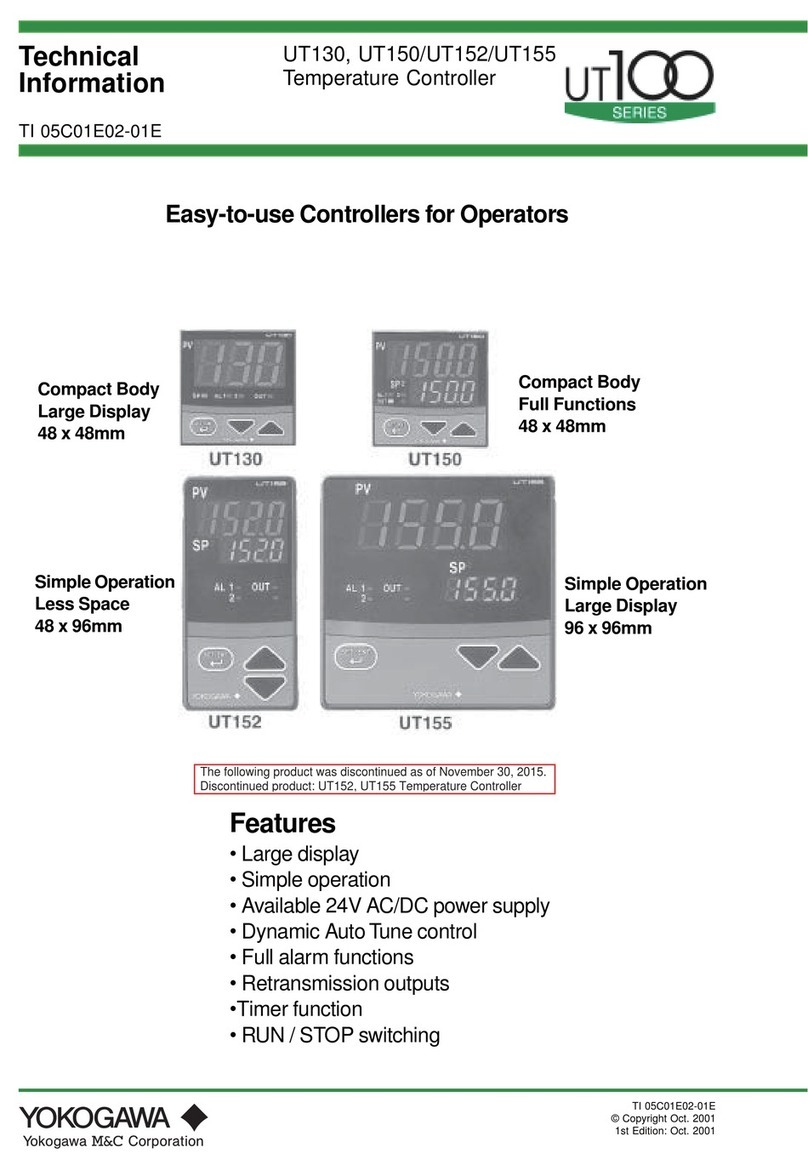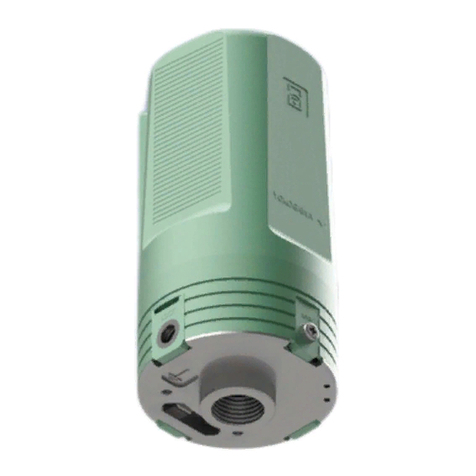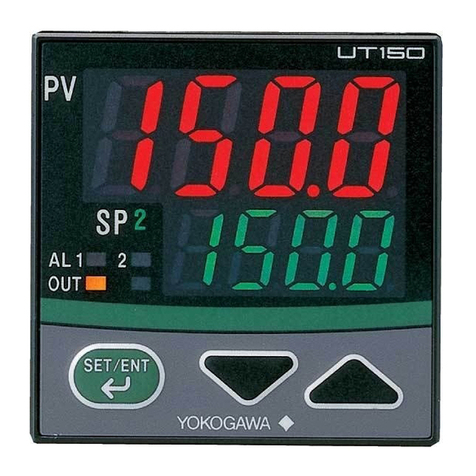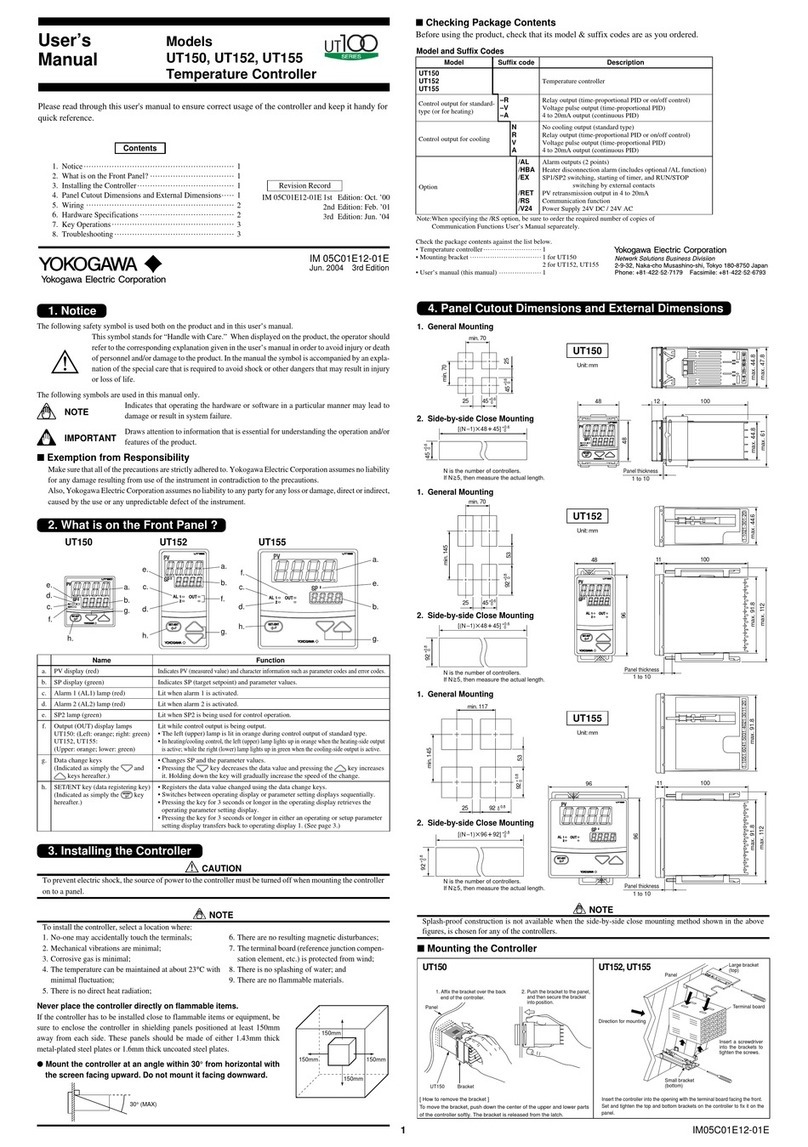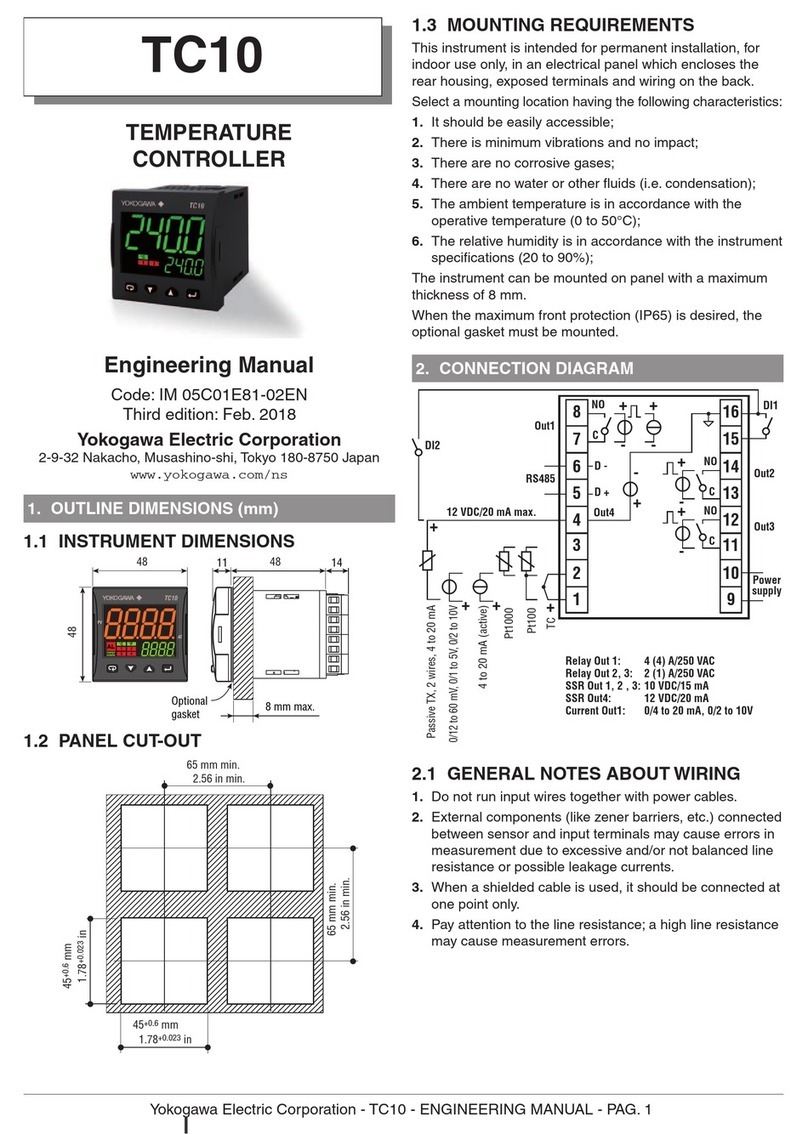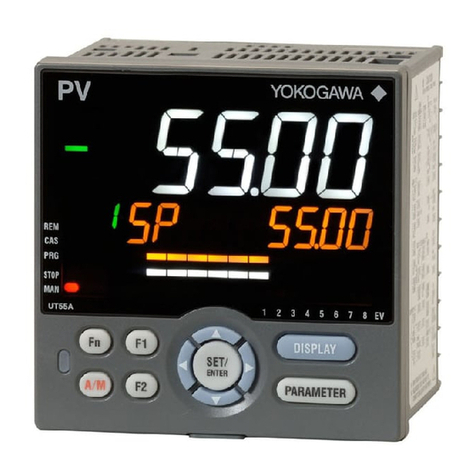
CONFIGURATION CODE
The TC10-N can be easily configured by the “Code Configuration” method for the most common requirements, just entering two 4-digit
codes: Cod1 [LMNO] for the Input Type and Control Mode selection and Cod2 [PQRS] for the Alarms and the Service Functions.
For complete controller configuration see the Engineering Manual.
Note: Before starting the configuration code setting, please define and write down Cod1 and Cod2 as needed:
LMNO
c%d1
LMNO
User c%d1
Input Type and Range L M
TC J -50 to +1000°C 0 0
TC K -50 to +1370°C 0 1
TC S -50 to 1760°C 0 2
TC R -50 to +1760°C 0 3
TC T -70 to +400°C 0 4
PT 100 -200 to +850°C 0 7
PT 1000 -200 to +850°C 0 8
Linear 0 to 60 mV 0 9
Linear 12 to 60 mV 1 0
Linear 0 to 20 mA (this selection forces Out 4 = TX) 1 1
Linear 4 to 20 mA (this selection forces Out 4 = TX) 1 2
Linear 0 to 5 V 1 3
Linear 1 to 5 V 1 4
Linear 0 to 10 V 1 5
Linear 2 to 10 V 1 6
TC J -58 to +1832°F 1 7
TC K -58 to +2498°F 1 8
TC S -58 to 3200°F 1 9
TC R -58 to +3200°F 2 0
TC T -94 to +752°F 2 1
PT 100 -328 to +1562°F 2 4
PT 1000 -328 to +1562°F 2 5
Control mode OP1 OP2 OP3 OP4 N O
ON/OFF heating = H H AL1 AL2 AL3 0 0
NU AL1 AL2 H 0 1
ON/OFF cooling = C C AL1 AL2 AL3 0 2
NU AL1 AL2 C 0 3
ON/OFF with neutral zone
(H/C)
H C AL2 AL3 0 4
H AL1 AL2 C 0 5
C H AL2 AL3 0 6
NU H AL2 C 0 7
C AL1 AL2 H 0 8
NU C AL2 H 0 9
PID heating = H H AL1 AL2 AL3 1 0
NU AL1 AL2 H 1 1
PID cooling = C C AL1 AL2 AL3 1 2
NU AL1 AL2 C 1 3
PID double action (H/C)
H C AL2 AL3 1 4
H AL1 AL2 C 1 5
C H AL2 AL3 1 6
NU H AL2 C 1 7
C AL1 AL2 H 1 8
NU C AL2 H 19
Note: As default,
when the alarms are active, only AL1 threshold
is available at “Operator Command” level to perform non
critical tasks. To protect the AL2 and AL3 thresholds against
undesired changes, they are available only at “Parameters
list” level (password: 20).
For different configurations, see
the Engineering Manual.
PQRS
c%d2
PQRS
User c%d2
Alarm 3 R
Alarm 2 Q
Alarm 1 P
Not used 000
Sensor break 111
Absolute High 222
Low 333
Absolute High/Low External High/Low 444
Internal High/Low 555
Deviation Deviation high 666
Deviation low 777
Band External band 888
Internal band 999
Service functions activation S
None 0
Wattmeter (instantaneous power expressed in kW) (note 1) 1
Wattmeter (Power consuption expressed in kWh/h) (note 2) 2
Absolute worked time (expressed in days) (note 3) 3
Absolute worked time (expressed in hours) (note 3) 4
Notes: 1. Wattmeter Instantaneous power is continuously computed
as multiplication of the Load Voltage, Load Current parameter
values and the controller output instantaneous value.
2. Wattmeter power consumption is the estimated hourly
energy consumption (using Load Voltage and Load Current
parameter values), computed on the previous 15 minutes
period. The readout is updated every 15 minutes.
3. Worked Time counter is continuously increased when
the controller is turned ON.
ON
Absolute Alarm
Absolute
High
Absolute
Low
ONON
ONON
ONON
Absolute High-Low Alarm
ON
ON ON
Deviation
Low
Deviation
High
Deviation Alarm
ONON
ON ONON
Band
External
Band
Internal
Absolute
External
Absolute
Internal
Band Alarm
PV
Time
PV
Time
PV
Time
PV
Time
ALARM TYPES (Cod2 digits:
,
,
)
PV
AT
PV
AT
PV
AT
PV
AT
PV
AT
Press and to enter
the configuration
Password 4
(default 300)
Press and to enter
c%d2
(Alarms and
Service Functions
)
Press to store the
Configuration code
HOW TO SET THE CONFIGURATION CODE
Note: To leave the Configuration session without
saving the settings made, press the button
Press for 3 seconds to
access the configuration
mode
Press and to enter
c%d1
(Input Type and
Control Mode)
TEMPERATURE CONTROLLER
Model: TC10 - Quick Guide .IM 05C01E81-01EN
4th edition - February 2018
Yokogawa Electric Corporation
2-9-32 Nakacho, Musashino-shi, Tokyo 180-8750 Japan
internet site: www.yokogawa.com/ns
EU Declaration of conformity and Manual retrieval
TC10 is a panel mounting, Class II instrument. It has been designed
with compliance to the European Directives. All information about
the controller use can be found in the Engineering Manual:
IM 05C01E81-02EN and the Communication Manual: IM 05C01E81-03EN
and General Specification: GS 05C01E81-01EN.
The EU Declaration of Conformity and the manual of the controller
can be downloaded (free of charge) from the web-site:
www.yokogawa.com/ns/tc10/im/
The Authorised Representative for this product in the EEA is:
Yokogawa Europe BV (Address: Euroweg 2 , 3825 HD Amersfoort,
The Netherlands) is the Authorised Representative of
Yokogawa Electric Corporation for this Product in the EEA.
Safety Precautions
The following general safety precautions must be observed during
all phases of operation, service and repair of this instrument.
If this instrument is used in a manner not specified in this manual,
the protection provided by this instrument may be impaired. Also,
YOKOGAWA Electric Corporation assumes no liability for the customer’s
failure to comply with these requirements. The following symbol is
used on the instrument.
This manual is an essential part of the product; keep it in a safe place for
future reference. This manual is intended for the following personnel:
- Engineers responsible for installation, wiring, and maintenance of
the equipment.
- Personnel responsible for normal daily operation of the
equipment.
m WARNING
Calls attention to actions or conditions that could cause serious or
fatal injury to the user or damage to the instrument, and indicates
precautions that should be taken to prevent such occurrences. The
user must refer to the Engineering manual for special instructions.
AC
AC/DC
The equipment wholly protected by double insulation or
reinforced insulation.
m WARNING
- Whenever a failure or a malfunction of the device may cause dan-
gerous situations for persons, things or animals, please remember
that the plant must be equipped with additional devices which
will guarantee safety.
- We warrant that the products will be free from defects in material
and workmanship for 18 months from the date of manufacturing.
Products and components that are subject to wear due to conditions
of use, service life and misuse are not covered by this warranty.
Safety, Protection, and Modification of the Product
- In order to protect the system controlled by this product and the
product itself, and to ensure safe operation, observe the safety
precautions described in the Engineering manual. Use of the
instrument in a manner not prescribed herein may compromise
the product’s functions and the protection features inherent in
the device. We assume no liability for safety, or responsibility for
the product’s quality, performance or functionality should users
fail to observe these instructions when operating the product.
- Installation of protection and/or safety circuits with respect to a
lightning protector; protective equipment for the system controlled
by the product and the product itself; foolproof or failsafe design
of a process or line using the system controlled by the product or
the product itself; and/or the design and installation of other
protective and safety circuits are to be appropriately implemented
as the customer deems necessary.
- This product is not designed or manufactured to be used in critical
applications that directly affect or threaten human lives. Such
applications include nuclear power equipment, devices using
radioactivity, railway facilities, aviation equipment, air navigation
facilities, aviation facilities, and medical equipment. If so used,
it is the user’s responsibility to include in the system additional
equipment and devices that ensure personnel safety.
- Modification of the product is strictly prohibited.
- This product is intended to be handled by skilled/trained person-
nel for electric devices.
m WARNING
- This instrument is for Measurement Category No. 1. Do not use it
for measurements in locations falling under Measurement Catego-
ries No. 2, No. 3 and No. 4.
Cable
entrance
Internal wiring
Outlet
IV
III OTII
No. EN 61010-2-030 Description
No. 1 O (Other) For measurements performed on circuits not directly
connected to MAINS.
No. 2 Measurement
Category II
For measurements performed on circuits directly
connected to the low-voltage installation.
No. 3 Measurement
Category III
For measurements performed in the building instal-
lation.
No. 4 Measurement
Category IV
For measurements performed at the source of the
low-voltage installation.
How to Connect Wires
m WARNING
- Wiring work must be carried out by a person with basic electrical
knowledge and practical experience.
- Be sure to turn OFF the power supply to the controller before wiring
to avoid an electric shock. Use a tester or similar device to ensure
that no power is being supplied to a cable to be connected.
- As a safety measure, always install a circuit breaker (an IEC 60947
compatible product, 5 A, 100 V or 220 V AC) in an easily accessible
location near the instrument. Moreover, provide indication that the
switch is a device for turning off the power to the instrument.
- Install the power cable keeping a distance of more than 1 cm from
other signal wires.
- The power cable is required to meet the IEC standards concerned or the
requirements of the area in which the instrument is being installed.
- Wiring should be installed to conform to NEC (National Electrical
Code: ANSI/NFPA-70) or the wiring construction standards in
countries or regions where wiring will be installed.
- For control relay output, alarm relay output, and power terminal
connections, use heat-resistant cables.
- Do not short-circuit the terminals of the SSR output.
- Recommended tightening torque: 0.5 Nm.
Model and suffix codes
Model Code
Suffix codes Description
TC10 -N oCooo DoF Temperature Controller
Fixed code -N Always "-N"
Power supply L 24 VAC/DC (Custom order)
H 100 to 240 VAC
Fixed code C Always "C"
OUT1 - 3
R N N
Relay output for ON/OFF control
RRR Relay output with 2 alarm relays,
for ON/OFF or Heat/Cool control
with 1 alarm
V N N DC Output for SSR
V R R
DC Output for SSR with 2 alarm
relays or DCV and Relay output for
Heat/Cool control with 1 alarm
VVR
2 DCV outputs for SSR with 1 Relay
(Custom order)
A R R
Analog output with 2 alarm Relays,
or analog output and Relay output
for Heat/Cool control with 1 alarm
IN/OUT4(Fixed code) D
Always "D" - Selectable I/O (logic
input / 12 V SSR drive output / 12VDC
20 mA transmitter power supply
Serial communication S RS485 Modbus
N None
Fixed code F Always “F”
Option Code /GK Panel gasket for IP65
PV
AT
Process Value
(in eng. units)
Set Point
(auto mode)
Output Value
(manual mode)
Param. value or
State/Function
(Editing mode)
Output
LEDs
Manual
mode
Alarm
active
Unit
(°C/°F) Autotune
in progress
(flashing)
DISPLAY AND KEYS
Access to:
- Operator Commands
(Timer, Setpoint selection ...)
- Parameters
- Configuration
Access to:
- Operator additional information
(Output value, running time ...)
Increase the displayed
value or select the
next element of the
parameters list
Decrease the displayed
value or select the
previous element
Exit from Operator
commands/Parameter
setting/Configuration
Programmable key:
Start the programmed function
(Autotune, Auto/Man, Timer ...)
Access to:
- Set Point
Operator Mode Editing Mode
Confirm and go to
Next parameter
MOUNTING
2
2
1
1
3
Overall dimensions (L x H x D): 48 x 48 x 73 mm
(1.89 x 1.89 x 2.87 in.)
Panel Cut-out (L x H): 45+0.6 x 45+0.6 mm
(1.78+0.023 x 1.78+0.023 in.)
65 mm min.
2.56 in min.
45+0.6 mm
1.78+0.023 in
Mounting requirements
This instrument is intended for permanent installation, for indoor
use only, in an electrical panel which encloses the rear housing,
exposed terminals and wiring on the back.
Select a mounting location having the following characteristics:
1. It should be easily accessible;
2. There is minimum vibrations and no impact;
3. There are no corrosive gases;
4. There are no water or other fluids (i.e. condensation);
5. The ambient temperature is in accordance with the operative
temperature (0 to 50°C);
6. The relative humidity is in accordance with the instrument
specifications (20 to 90%);
The instrument can be mounted on panel with a maximum
thickness of 8 mm.
When the maximum front protection (IP65) is desired, the optional
gasket must be mounted.
65 mm min.
2.56 in min.
45+0.6 mm
1.78+0.023 in
RS485
Pin connector
q1.4 mm max.
(0.055 in.)
Stripped wire
L: 5.5 mm
(0.21 in.)
L
Thermo-
couple
DI1
OP3
OP2
OP4
(note)
DI2 (note)
Analogue input
mV, V mA
Note: Terminal 4 can be programmed as:
- Digital Input (DI2) connecting a free of
voltage contact between terminals 4 and 16;
- 0 to 12 V SSR Drive Output (OP4) connecting
the load between terminals 4 and 16;
- 12 Vdc (20 mA) transmitter power supply
connecting the 2 wire transmitter between
terminals 4 and 1; for 3 wire transmitter connect
terminal 4 to transmitter power supply input and
terminal 1 and 2 to transmitter signal output.
Neutral
Line
12 VDC
(note)
PV
4 to 20 mA
3 wire transmitter
12 VDC
(note)
PV
Pt100Pt1000
100 to 240 V
20 to 30 Vdc/
18 to 28 Vac
4 to 20 mA
2 wire transmitter
OP1
